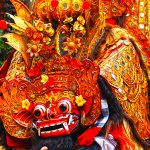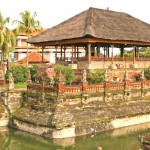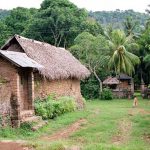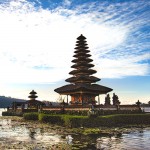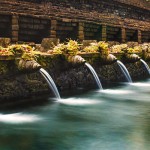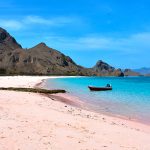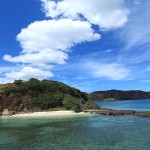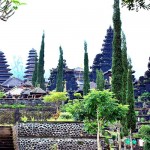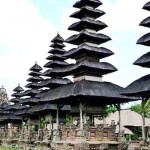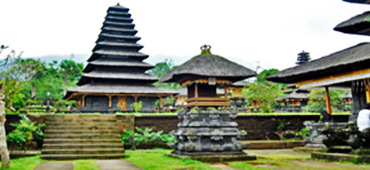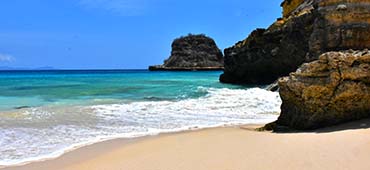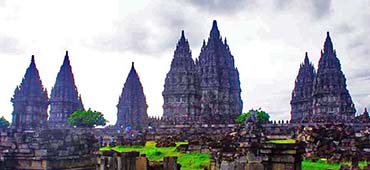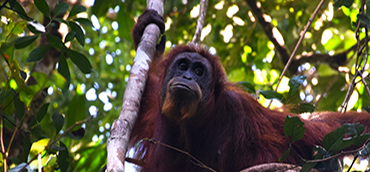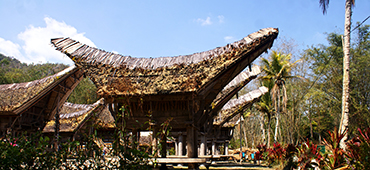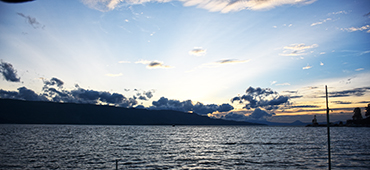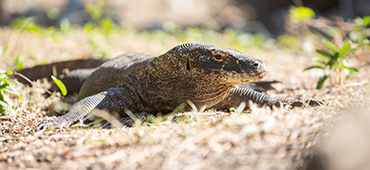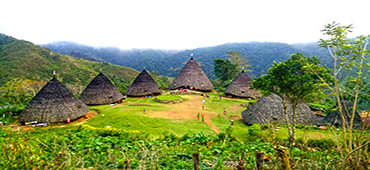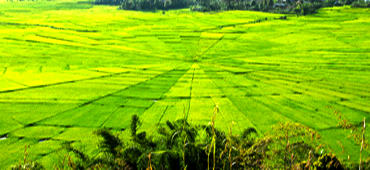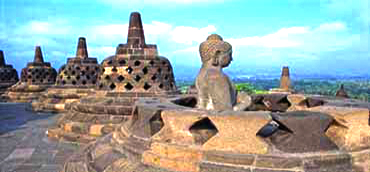Indonesia Best Places To Visit
The Republic of Indonesia is the largest archipelago in the world comprising 13,466 large and small tropical islands fringed with white sandy beaches, many still uninhabited and a number even still unnamed. Straddling the equator, situated between the continents of Asia and Australia and between the Pacific and the Indian Oceans, it is as wide as the United States from San Francisco to New York, equaling the distance between London and Moscow. Indonesia has a total population of more than 215 million people from more than 200 ethnic groups. The national language is Bahasa Indonesia.
Among the most well known islands are Sumatra, Java, Bali, Kalimantan (formerly Borneo), Sulawesi (formerly Celebes), the Maluku Islands (or better known as Moluccas, the original Spice Islands) and Papua. Then, there is Bali “the world’s best island resort” with its enchanting culture, beaches, dynamic dances and music. But Indonesia still has many unexplored islands with grand mountain views, green rainforests to trek through, rolling waves to surf and deep blue pristine seas to dive in where one can swim with dugongs, dolphins and large mantarays.
Because of her location, and geology, Indonesia is blessed with the most diverse landscape, from fertile ricelands on Java and Bali to the luxuriant rainforests of Sumatra, Kalimantan and Sulawesi, to the savannah grasslands of the Nusatenggara islands to snow-capped peaks of West Papua.
Her wildlife ranges from the prehistoric giant Komodo lizard to the Orang Utan and the Java rhino, to the Sulawesi anoa dwarf buffalos, to birds with exquisite plumage like the cockatoo and the bird of paradise. This is also the habitat of the Rafflesia the world’s largest flower, wild orchids, an amazing variety of spices, and aromatic hardwood and a large variety of fruit trees. Underwater, scientists have found in North Sulawesi the prehistoric coelacanth fish, a “living fossil” fish, predating the dinosaurs living some 400 million years ago, while whales migrate yearly through these waters from the South Pole. Here are hundreds of species of colourful coral and tropical fish to admire.
Culturally, Indonesia fascinates with her rich diversity of ancient temples, music, ranging from the traditional to modern pop, dances, rituals and ways of life, changing from island to island, from region to region. Yet everywhere the visitor feels welcomed with that warm, gracious innate friendliness of the Indonesian people that is not easily forgotten.
Facilities-wise Indonesia’s hotels are second to none. In fact, many of our luxurious and unique hotels have constantly been listed as some of the best in the world, located on white sandy beaches, overlooking green river valleys, or situated in the heart of busy capital Jakarta. While Indonesia’s cities like Jakarta, Bandung, Surabaya, or Makassar are a hive of activities for business and leisure and a paradise for shoppers, offering upscale boutiques selling top brand names, to local goods at road-side stalls. Here gourmets can treat themselves to the many regions’ delectable spicy cuisine or dine sumptuously at international restaurants. And for sheer relaxation, Indonesia Spas are second to none to reinvigorate both body and mind.
Convention centers are equipped with state-of-the-art facilities, as many top international conferences and exhibitions are held in Jakarta, Bali to Manado, ranging from the Global Climate Change Conference in Bali to the World Ocean Conference in Manado , to trade and investment exhibitions and tourism trade shows in many provincial capital cities.
Jakarta, Bali, Medan, Padang, Bandung, Solo, Yogyakarta, Surabaya, Makassar are connected by direct international flights, and many regular and low cost carriers fly passengers to Indonesia’s towns or remote locations.
Climate
Being a tropical country, Indonesia is blessed with two seasons, namely dry and rainy. Dry usually occurs from June to September and the rest is rainy season. Sunshine is abundant except in rainy season when the sky tends to be cloudy. It is advisable to visit Indonesia during dry season.
Make sure that your visit does not coincide with holiday festivities such as Muslim holiday Eid (or Lebaran, like Indonesians are fond to say), because the traffic tends to be heavy especially in Java island. Unless you are interested in seeing the festivals up close and experiencing them, of course.
Indonesia’s climate can be hot and humid, so bringing along sunblocks and moisturizers during dry season is recommended. No need to bring umbrellas during rainy season because they are abundant and can easily be bought even in small shops. You might need extra clothing though, and you can purchase them almost anywhere.
Culture
Living on more than 13,400 islands, the Indonesian nation today counts some 200 million population comprising more than 200 ethnic groups. After Independence in 1945 inter-marriages among people of different ethnic groups have welded the population into a more cohesive Indonesian nation.
Language
Bahasa Indonesia is the national and official language in the entire country. It is the language of official communication, taught in schools and spoken on television. Most Indonesians today speak at least two languages or more, Bahasa Indonesia and their local language, of which Indonesia counts more than 300 regional languages.
Bahasa Indonesia is based on the high Malay language as spoken and written in the Riau Islands, as in the early 19th. century, Malay was the lingua franca throughout the then Dutch East Indies, the language spoken in trade transactions. The more democratic Malay language was preferred by nationalistic youth above the Javanese language, despite the fact that Javanese is more sophisticated and at the time spoken by the majority population, Yet, Javanese is feudal as it has different levels of language depending on ones status and the status of the person spoken to. The Youth Pledge of 1928, therefore, vowed to build one Indonesian country, one nation, speaking one language: Bahasa Indonesia.
Since then, Bahasa Indonesia has developed rapidly incorporating Javanese terms, Jakarta dialect, as well as many English and Arabic words into its vocabulary.
Bahasa Indonesia use Latin alphabets but some parts of Indonesia have their own scripts, too. Bahasa Indonesia is rather easy to learn and once you get the hang of it, you’ll find out that its actually quite simple. You can try some simple Indonesian phrases, to get you started.
Fact: there are 583 languages and dialects spoken by the different ethnic groups in Indonesia. Imagine a school of 583 students who each speaks different languages or dialects. Confusion will be an understatement. Therefore its very fortunate that every single ethnic group embraces Bahasa Indonesia as the national language.
History
Ever since prehistoric times the Indonesian archipelago has been inhabited. Java Man or pithecanthropus erectus (upright ape-man) is the oldest known inhabitant here, having lived over a million years ago. Other more recent prehistoric species include the still disputed homo Floresiensis or the Flores hobbits, dwarf people, who have also made these islands their home.
Historically, Chinese chronicles mention that trade between India, China and these islands was already thriving since the first century AD. The powerful maritime empire of Criwijaya with capital around Palembang in southern Sumatra, was the centre for Buddhism learning and was known for its wealth. It held sway over the Sumatra seas and the Malacca Straits from the 7th to the 13th. century. In the 8th -9th century, the Sailendra Dynasty of the Mataram kingdom in Central Java built the magnificent Buddhist Borobudur temple in Central Java, this was followed by the construction of the elegant Hindu Prambanan Temple built by the Civaistic king Rakai Pikatan of the Sanjaya line.
From 1294 to the 15th century the powerful Majapahit Kingdom in East Java held suzerainty over a large part of this archipelago. Meanwhile, small and large sultanates thrived on many islands of the archipelago, from Sumatra to Java and Bali, to Kalimantan, Sulawesi, Ternate and the Moluccas.
In the 13th century, Islam entered Indonesia through the trade route by way of India, and today, Islam is the religion of the majority of the population.
Throughout history, traders have brought the world’s large religions of Buddhism, Hinduism and Islam to this archipelago, deeply influencing this country’s culture and way of life. Yet Indonesia was never conquered by India nor China, until Europeans came and colonized these islands.
Marco Polo was the first European to set foot on Sumatra. Later, in search for the Spice Islands the Portuguese and Spaniards arrived in these islands sailing around the Cape of Good Hope in southern Africa. In 1596 the first Dutch vessels anchored at the shores of West Java after a long voyage.? Over the next three centuries, the Dutch gradually colonized this archipelago until it became known as the Dutch East Indies.
But revolt against the colonizers soon built up throughout the country. The Indonesian youth, in their Youth Pledge of 1928 vowed together to build “One Country, One Nation and One Language: Indonesia”, regardless of race, religion, language or ethnic background in the territory then known as the Dutch East Indies.
Finally, on 17 August 1945, after the defeat of the Japanese in the Second World War, the Indonesian people declared their Independence through their leaders Soekarno and Hatta. Freedom however was not easily granted. Only after years of bloody fighting did the Dutch government finally relent, officially recognizing Indonesia’s Independence in 1950.
Jakarta, located on the north coast of western Java is the capital of the Republic of Indonesia. It is the seat of government, and center of business and finance. A large, modern metropolitan city with a population of 9 million people, Jakarta is a melting pot of all different ethnic groups in the archipelago.
Today, after six decades of freedom, Indonesia has become the third largest democracy in the world. Despite facing today’s global financial crisis, the country has managed to show positive economic growth, and is internationally respected for her moderate, tolerant yet religious stance in today’s global conflict among civilizations.
Flora and Fauna
Indonesia’s moderate climate throughout the year, its fertile soil brought about by lava, and its minerals found on land and in the sea caused by volcanic eruptions, have made this the ideal habitat for a large number of unique and endemic flora and fauna. Indonesia has among the most diverse variety of species of animal life on land and in the seas found anywhere in the world.
Indonesia’s flora and fauna is divided by the Wallace Line that runs between Bali and Lombok, continuing north between Kalimantan and Sulawesi. West of the Line, vegetation and wildlife are Asian in nature, whereas east of the Line, these resemble those of Australia.
Vegetation found in different parts of the archipelago varies according to rainfall, soil and altitude. On the wetter islands, on Sumatra, Kalimantan, and Papua, ancient rainforests cover large areas. These forests are rich in valuable hardwood, aromatic and spice trees, as well as exotic fruit trees. Lately, however, through illegal logging and human settlements, large tracts of forests have been decimated leaving infertile land that cause flooding and erosions.
On the islands east of Bali known as the Nusa tenggara islands (or once known as the Small Sunda Islands), there are savannahs, while on other mountain tops such as in the Mt. Gede National Park only 100 kms from Jakarta, one finds edelweiss, more reminiscent of Switzerland.
Discover-information Indonesia’s wildlife varies from the Java mouse deer (or kancil) and the one-horned rhino to the Sumatran and Kalimantan Orang Utan, the Sulawesi Anoa (a small water buffalo), the prehistoric giant Komodo lizard to the exotic Bird of Paradise in Papua.
How about flora? Here in Indonesia, you can find Raflesia Arnoldi in Bengkulu, one of the giant and unique flowers in the world.
To preserve these unique flora and fauna Indonesia has designated 44 national parks throughout the archipelago, covering both land and sea, a large number of protected reserves offering ecotourism opportunities, as well as botanic gardens and zoos.
Where to go in Indonesia?


